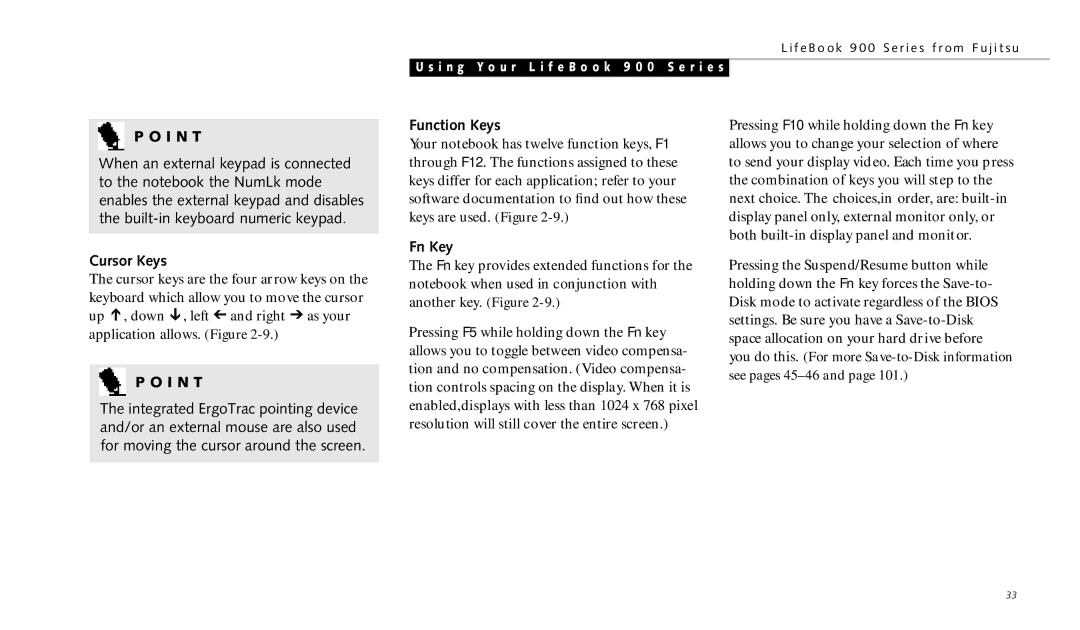
L i f e B o o k 9 0 0 S e r i e s f r o m F u j i t s u
U s i n g Y o u r L i f e B o o k 9 0 0 S e r i e s
P O I N T
When an external keypad is connected to the notebook the NumLk mode enables the external keypad and disables the
Cursor Keys
The cursor keys are the four arrow keys on the keyboard which allow you to move the cursor up Õ, down Ô, left Ó and right È as your application allows. (Figure
P O I N T
The integrated ErgoTrac pointing device and/or an external mouse are also used for moving the cursor around the screen.
Function Keys
Your notebook has twelve function keys, F1 through F12. The functions assigned to these keys differ for each application; refer to your software documentation to find out how these keys are used. (Figure
Fn Key
The Fn key provides extended functions for the notebook when used in conjunction with another key. (Figure
Pressing F5 while holding down the Fn key allows you to toggle between video compensa- tion and no compensation. (Video compensa- tion controls spacing on the display. When it is enabled,displays with less than 1024 x 768 pixel resolution will still cover the entire screen.)
Pressing F10 while holding down the Fn key allows you to change your selection of where to send your display video. Each time you press the combination of keys you will step to the next choice. The choices,in order, are:
Pressing the Suspend/Resume button while holding down the Fn key forces the
33
